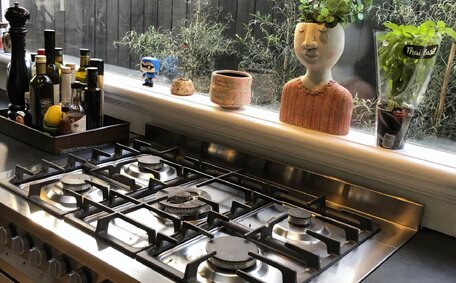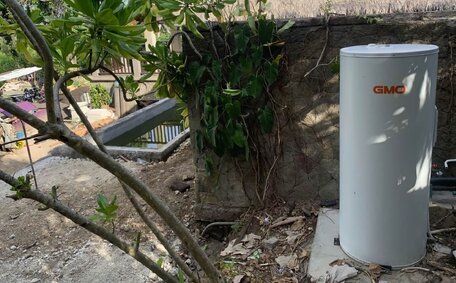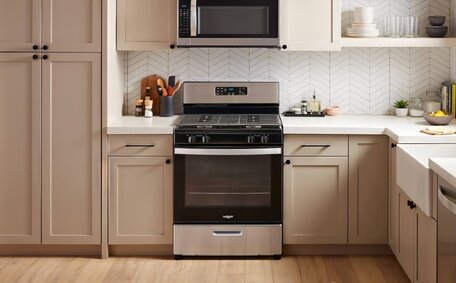
Financial Benefits of Natural Gas
Natural gas offers many financial perks over other energy sources. It burns cleaner and costs less than alternatives, helping lower monthly bills.
Read MoreBlocked drains in rental properties can cause major disruptions, usually necessitating prompt attention. When sinks or toilets start overflowing, immediate action is required to resolve the problem. Unfortunately, blocked drains are a relatively common occurrence in rented accommodations across the city of Sydney.
Balmain Plumbing stands ready to assist with qualified and insured experts in blocked drains. Our seasoned Sydney plumbers excel in resolving all varieties of drain blockages. Equipped with state-of-the-art tools, we proficiently address blockages with speed and efficiency.
However, when a blocked drain does occur in a water property serviced by Sydney Water, it inevitably raises the question - who is responsible for paying for the repair?
Is it the landlord’s duty to cover the cost, or does the onus fall on the tenant? This article from Balmain Plumbing will explore the division of responsibility between tenants and landlords when faced with blocked drain issues.
Blocked drains can often develop gradually over time without anyone noticing at first. Buildup from grease, soap scum, hair, and other debris can insidiously accumulate, leading to complete blockages over time. Tree roots infiltrating exterior drainage lines is another common cause of progressive drain blockages.
This makes determining when the problem was initially identified with the blocked drain tricky, especially in a rental property when tenants are constantly changing. If a new tenant moves in and experiences a blocked drain shortly after, it can be hard to ascertain whether the issue predated their arrival.
It is crucial for both landlords and tenants to thoroughly inspect and document plumbing conditions at the start of occupancy. Creating a detailed record provides a point of reference in case of future disputes regarding plumbing issues.
Establishing the origin of a drain blockage is essential to identifying who is responsible for resolving the plumbing issue. Issues that clearly were present before the current tenant’s first time occupancy are usually the landlord’s responsibility to repair. However, for blockages that arise after the tenant moves in, landlords may be liable if the issue is attributed to tenant negligence.
Proactive inspections and documenting at tenancy start can help delineate responsibilities and streamline future blockage resolutions.
One of the next day concerns of most common causes of blocked drains, especially external drainage lines, is intruding tree roots. Tree roots searching for moisture underground can infiltrate cracks and joints in drainage pipes. Once inside the pipes, the roots can proliferate quickly, leading to significant blockages if not addressed.
It can be challenging to detect blockages caused by tree roots. There may be no obvious external signs, as roots don’t have to penetrate a pipe to infiltrate it. Tools such as drain snakes, camera inspections and hydrojetting are highly effective for detecting tree roots in drains.
When tree roots block external drains on a rental property, the property owner is typically responsible for their removal. Tree maintenance is usually considered part of their responsibility maintaining a property responsibly.
Blocked toilets are often the result of hair, dental floss, cotton swabs and feminine hygiene products that cause drain clogs when tenants flush them irresponsibly. Unlike toilet paper, these items don’t degrade readily in water and should never head down toilet pipes, instead banding together to create significant blockages.
An isolated incident caused by a guest’s actions may be something the tenant can rectify.
Cooking fats, oils and grease are a prime culprit in kitchen sink blockages when carelessly poured down the drain. Thick and viscous, they coat pipes and solidify into fatbergs. Food scraps often stick to the grease, making clogs worse.
Tenants are advised to dispose of fats and oils separately to prevent them from clogging drains. Nevertheless, should grease accumulation result from pre-existing pipe problems, it is upon the landlord to address these issues. A comprehensive drain inspection helps to resolve blocked pipes and identify if pipe flaws contributed, making it the landlord’s responsibility.
Under most residential tenancy laws in Australia, landlords have a duty to maintain rental properties in good repair. This includes ensuring that plumbing and drainage systems are functioning properly.
If a blocked drain is found to be caused by a pre-existing issue, such as invasive tree roots or a collapsed pipe, the landlord is usually responsible for paying for repairs. They must also cover the costs of any emergency repairs needed to restore essential services like sewer access.
Landlords ought to address potential plumbing issues with timely repairs and regular maintenance. Upon learning of a blockage, it’s imperative for landlords to determine its root cause and carry out the necessary repair work.
Tenants also have a duty of care, alongside the broad maintenance obligations of landlords. They are expected to use drains appropriately and report any issues promptly to give your landlord an opportunity to rectify problems.
If a blockage arises due to inappropriate items flushed down toilets or poured down sinks by the tenant, they may be liable to pay any cost of the repairs. But they should still notify the landlord, who can determine if factors like pipe design also played a role.
Timely reporting of plumbing issues by tenants often leads to satisfaction with the landlord’s maintenance response, as it exhibits diligence beyond their expected duties. Open communication between both parties is recommended to efficiently address any problems.
They must also cover the c There are several approaches that can help resolve these situations smoothly and fairly.
The first step is to consult the tenancy agreement, which should outline responsibilities for maintenance and repairs. While standard contracts vary, most stipulate that landlords are liable for issues stemming from structural faults or wear and tear. When misuse or negligence is apparent, the tenant typically pays blocked drain repair costs.
If the contract does not provide sufficient clarity, tenants and landlords should seek to come to a reasonable agreement based on the circumstances. Compromise and flexibility from both parties can prevent disputes from escalating.
In complicated cases with no obvious cause, a professional drainage inspection can provide evidence of what contributed to the blockage. A plumber can run diagnostics like pipe cameras or hydrojetting to identify issues like tree root invasion, pipe collapses or fat/grease buildup.
Armed with this expert insight into the state of wastewater pipes, landlords and tenants can determine liability when situations came out based on whether the source stems from structural faults or tenant actions. Reasonable costs for the inspection can be shared if causes are unclear.
Understanding state-specific rental laws and processes can aid in resolving persistent disputes. Tenants can also seek assistance where the council can provide advice from their local council’s Tenants Advice and Advocacy Service for matters relating to fair trading. Landlords should seek advice from property manager associations.
In some cases formal interventions like filing with the tenancy tribunal may be required. But focusing on open communication and good faith efforts between parties keeps most blocked drain disputes out of legal proceedings.
There are several effective steps tenants and landlords can take to help prevent blocked drains from occurring in rental properties.
Landlords should schedule systematic inspections and upkeep of plumbing systems. Annual camera inspections can detect issues like tree root intrusion before they evolve into major blockages. Periodic drain cleaning with high-pressure water jetting keeps pipes clear of grease and debris buildup, ensuring a high quality flow.
Tenants should be mindful to avoid pouring fats/oils down drains and limit use of harsh chemicals. It is advised to use drain strainers, practise careful waste disposal, and report slow drains promptly.
Landlords can consider upgrades like installing drain screens to prevent debris entering the sewer line. Enhancing pipe ventilation and accessibility can facilitate easier maintenance, often resolving issues promptly.
By taking proactive measures, landlords provide well-maintained plumbing systems and demonstrate their commitment to preventing problems. Tenants show their diligence by bringing issues promptly to the landlord’s attention. Proper communication and prompt engagement with landlords can prevent many potential drain blockages.
as a blocked drain issue progresses, I highly recommend determining the right moment to call in a blocked drain plumber for both landlords and tenants. Here are some signs where I highly recommend it’s time to contact a reliable plumber:
Should sinks, tubs, or toilets begin to fill with slow-draining water, it’s important to seek professional assistance. A sewer choke can damage property extensively and create health hazards. For immediate plumbing service, call Balmain Plumbing right away in such situations.
Unpleasant odours can often stem from drains indicating a backup of sewage, which experienced plumbers can remedy. Noxious sewer gases may also leak, creating respiratory risks. Have a plumber inspect the situation urgently.
If more than one fixture is blocked and standard drain clearing attempts fail, a blocked sewer could indeed be the underlying issue. This situation, possibly affecting hot water flow, requires expert diagnosis and repair.
Issues in underground sewer mains and external drainage pipes can be extremely difficult to pinpoint without professional tools like sewer cameras. Call Balmain Plumbing to accurately identify external blockages.
If invasive tree roots are suspected within drainage pipes, the problem will progressively worsen without professional removal. Our experts can clear roots safely and effectively.
For swift and effective blocked drain solutions and stellar customer service in Sydney’s Balmain area, reach out to our licensed plumbers at Balmain Plumbing on 1300 349 338 or at [email protected]. Our licensed plumbers are proficient and considerate, ensuring minimal disruption for landlords and tenants during the repair of blocked drains.
Natural gas offers many financial perks over other energy sources. It burns cleaner and costs less than alternatives, helping lower monthly bills.
Read MoreChoosing the correct hot water system size involves considering factors like number of household members, number of bathrooms, peak usage times and daily hot water needs per person. Our guide helps determine the right system capacity.
Read MoreHaving trouble with your gas water heater not heating properly? The pilot light may have gone out. Follow our clear guide on relighting your gas water heater’s pilot light in 6 easy steps. Or call the friendly experts at Balmain Plumbing if you need assistance relighting your pilot.
Read MoreBalmain, 2041 NSW
We will call back as soon as possible.




